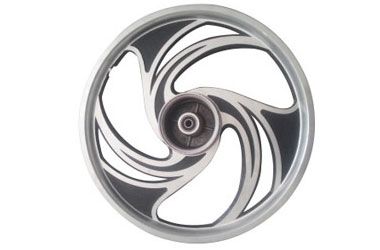Forgings and castings are often used in industrial production. Although the two are only one word apart, due to their different manufacturing processes, the internal organization of these two types of workpieces is very different, so the detection methods are also very different. Alloy steel casting process supplier to share with you:
Forgings use forging equipment to forge the bar material. Generally, it is impossible to forge more complex workpieces, which requires a large amount of processing. machining. The advantages of forgings are mainly extensible lengths and shrinkable cross sections.
Explanation of concepts-forging
Steel castings are metal objects obtained by the casting method, that is, the molten liquid metal is poured into a pre-prepared mold by pouring, injection molding, suction or other methods. (See casting cleaning) and post-processing (see casting post-processing), the resulting object has a certain shape, size and performance.
Explanation of concepts-casting
Whether it is casting or forging, in order to ensure the quality and safety of the product, it is necessary to perform non-destructive testing on the workpiece. Due to the different internal organizations of the two types of workpieces, the testing methods and testing precautions are also different. The differences between ultrasonic testing in the casting and forging testing are explained below.

Steel Castings
About Forging Inspection
There are only two sources of defects in forgings: one is caused by defects in the ingot; the other is the defects generated during the forging process and heat treatment.
At present, the main defects of forgings are shrinkage, shrinkage, slag inclusions, cracks, folds, and white spots. Due to forging deformation, the defects in the forging generally have a certain directionality. Therefore, in order to obtain the best detection effect, the choice of the sound beam incident surface and incident direction during the forging detection needs to consider the deformation of the forging process and the direction of the streamline. It is possible to make the ultrasonic beam direction perpendicular to the forging streamline direction.
One of the great advantages of forgings is that the internal structure grains are very fine, so the attenuation and scattering of ultrasonic waves caused by them are very small. Therefore, a higher detection frequency can be used on the forgings. At the same time, it can meet the requirements of high-resolution detection and achieve smaller size defects. The purpose of the test.
About stainless steel castings parts testing;
The defects of castings are mainly the following categories: hole defects (including shrinkage, shrinkage, looseness, porosity), crack cold insulation (cold crack, hot crack, white point, heat treatment crack), slag inclusion defects, etc. At the same time, due to stress, cracks often occur in castings with fast cooling speeds, complex geometries, and large cross-sectional dimensions. This kind of defect is the most dangerous.
Due to the uneven and dense structure of the casting, the surface is rough and the shape is complex, which results in poor ultrasonic penetration and serious clutter interference.
To sum up, the main common points and differences between the application of ultrasonic testing in castings and forgings are as follows:
Common ground
1. The instrument is the same, including the probe, connection cable and display.
2. Same couplant.
3. The detection theory is the same (physical theory).
4. The same purpose (all to ensure the quality of the workpiece).
difference
1. Due to the different fineness of the internal tissue particles, the ultrasonic attenuation of the casting is very serious, and high-frequency defect detection cannot be performed (otherwise, the clutter is large, and it is easy to confuse the defect wave and the clutter).
2. The requirements are different. The quality level of forgings is high, and the requirements of castings are much lower than those of forgings. Therefore, the evaluation criteria are different.
3. The causes and types of defects are different.
Another: There are no absolute advantages and disadvantages of the two materials. Many factors need to be considered in engineering applications. Only the most suitable is the best.
Changzhou Kadi International Trade Co.,Ltd.
Add. : Room 627, Building 24, Wuyue Square, Hutang Town, Wujin District, Changzhou,Jiangsu,China 213161
Tel : +86 519 8180 9887
Fax : +86 519 8180 9887
E-mail: info@kadi-cn.com jack@kadi-cn.com